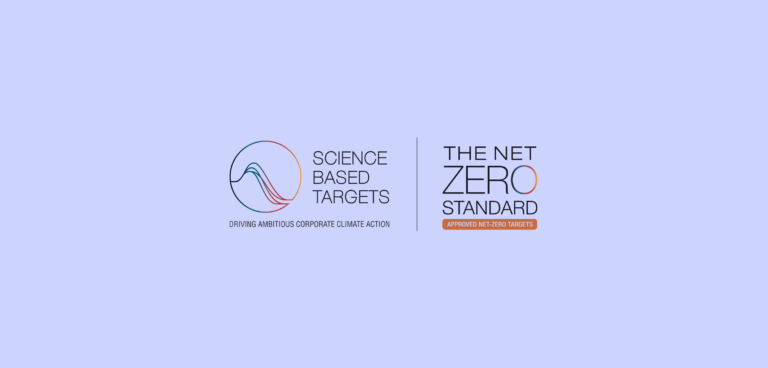-
In line with the 1.5°C trajectory outlined in the Paris Agreement, Forto commits to reducing absolute scope 1, 2 and 3 greenhouse gas emissions (GHG) 90% by 2050 from a 2021 basis, thus setting an example in the highly polluting logistics sector.
-
Forto is committing to the most ambitious target possible, going beyond the “well below two degrees” approach, encompassing emissions from scope 1 to 3, taking into consideration a near-term horizon (until 2030) as well as a long-term one (until 2050), and including the commitment to neutralize the remaining emissions by 2050.
-
Forto’s targets fit with the International Maritime Organisation’s ambitions to reach net-zero GHG by or around 2050 and to ensure an uptake of alternative zero and near-zero GHG fuels by 2030.
The Science Based Targets initiative (SBTi) has recognised that Forto’s emission reduction targets are in line with a 1.5°C trajectory, thereby implementing the requirements of the Paris Agreement.
“As part of an industry responsible for 8% of global greenhouse gas emissions and that will become the highest emitting industry by 2050 unless action is taken, our contribution is essential to meeting the goals of the Paris Agreement. Getting our targets approved is one more step in the 1.5°C direction and a clear commitment to our many customers and partners who are calling for net zero supply chains”, said Michael Wax, CEO at Forto.
Forto is implementing the requirements of the Paris Agreement while keeping on growing
Science-based targets (SBTs) translate the requirements of the Paris Agreement – limiting global warming to well below 2°C above pre-industrial levels and pursuing efforts to limit it to 1.5°C – into third-party verified targets on an organisational level. Unlike non-science-based targets, SBTs demonstrate concrete, public and verifiable sustainability commitment. Forto aligns its targets to limit global warming to 1.5°C while planning to keep on growing significantly above market average.
Reaching net-zero greenhouse gas emissions across the value chain by 2050
Net-zero targets are currently the most ambitious designation available through the SBTi process: not only do Forto’s targets go beyond the “well below two degrees” approach, they also encompass emissions from scope 1 to 3, have a near-term horizon (until 2030) as well as a long-term one (until 2050), and include the commitment to neutralize the remaining emissions by 2050.
-
Near-Term Targets: Forto commits to reducing absolute scope 1 and 2 GHG emissions 42% by 2030 from a 2021 base year. Forto also commits to reducing absolute well-to-wake scope 3 GHG emissions from subcontracted container shipping operations 35.6% within the same timeframe. Forto finally commits to reducing all other absolute scope 3 emissions 42% within the same timeframe.
-
Long-Term Targets: Forto commits to reducing absolute scope 1 and 2 GHG emissions 90% by 2050 from a 2021 base year. Forto also commits to reducing absolute scope 3 GHG emissions 90% within the same timeframe.
As 98% of Forto’s company climate footprint stems from the transport services it offers its customers, Forto is focussing on reducing transport emissions. Direct emissions reductions will be prioritized and all residual emissions will be neutralized in line with SBTi criteria to reach net-zero emissions.

Using the Sectoral Decarbonization Approach to set scope 3 maritime transport targets
Forto is one of the first companies to use the Sectoral Decarbonization Approach (SDA) to set its maritime transport target. By developing a specifical methodology for the maritime sector, the SBTi recognises that logistics is an industry hard to abate given that vessels remain in use for an average of several decades and that zero emission fuel is not widely available yet.
In line the International Maritime Organisation’s ambitions
By 2030, the IMO strives for the uptake of zero GHG emissions technologies, fuels and/or energy sources to represent at least 5%, aiming for 10% and to reduce the total annual GHG emissions from international shipping by at least 20%, striving for 30% whereas Forto is aiming for 42% reduction for scope 1 and 2 emissions and 35.6% for we well-to-wake scope 3 emissions. Forto is thereby leading the way to decarbonise the logistics industry.
Building on Forto’s track record in reducing emissions
Already today, 70% of Forto’s customers are taking climate action by understanding, reducing and compensating their transport emissions. The number of Forto’s customers opting for biofuel has also doubled year over year. The evolution towards sustainable logistics is a process that started with the foundation of Forto in 2016. Since then, Forto has been measuring, reducing and offsetting its own GHG emissions by introducing several measures including default train travel within countries where the company is operating and vegetarian catering in all its offices, thereby reducing its emissions by 47% compared to a meat-based diet. More than 70% of Forto’s electricity globally comes from renewable energy sources. Forto is building on this track record to reach its net-zero targets.
